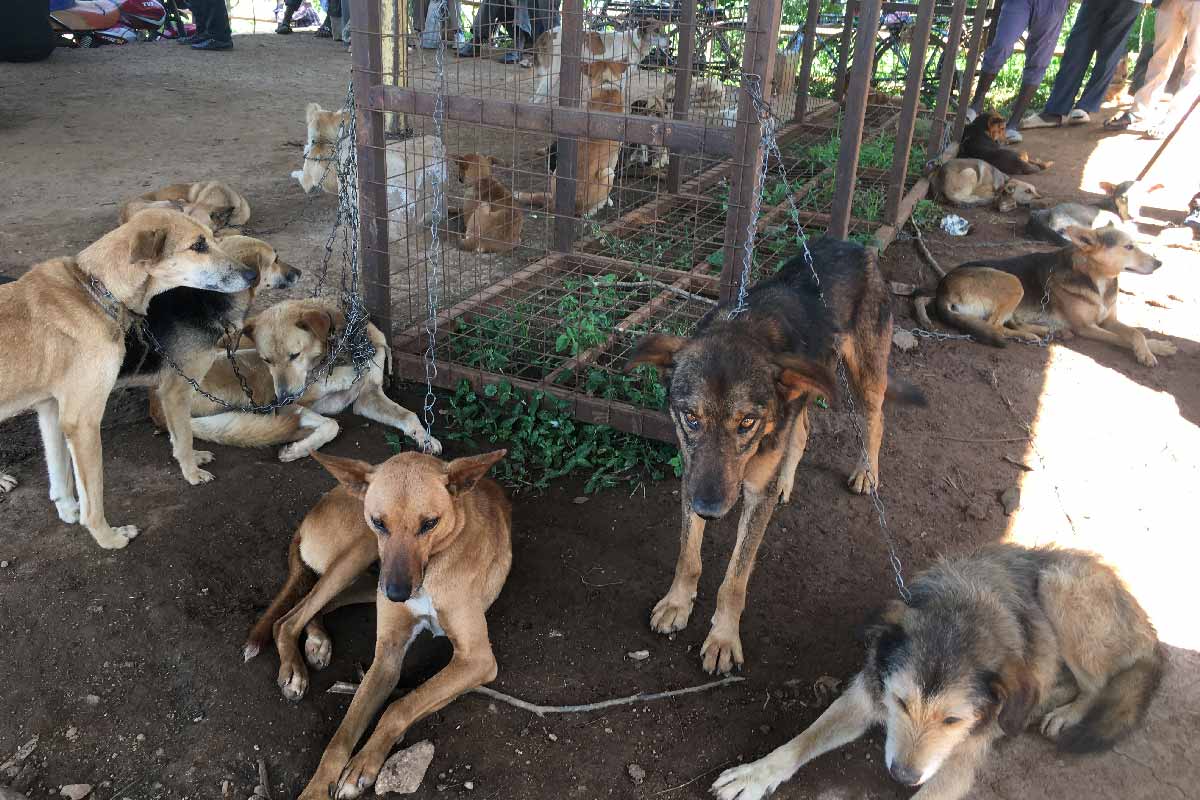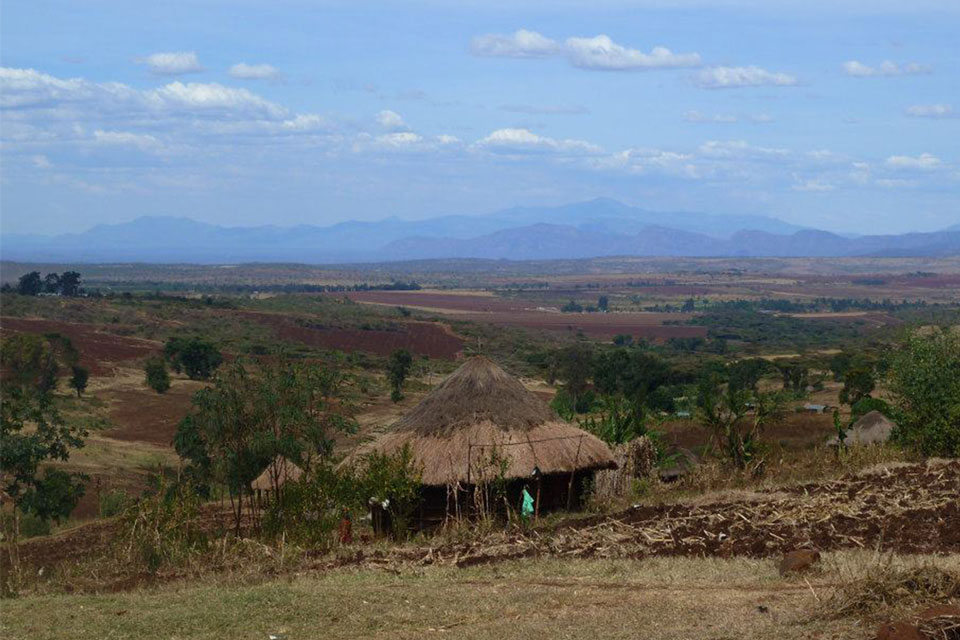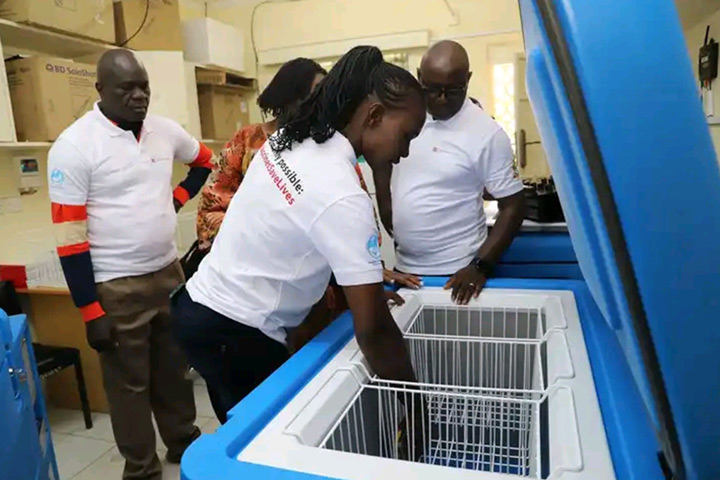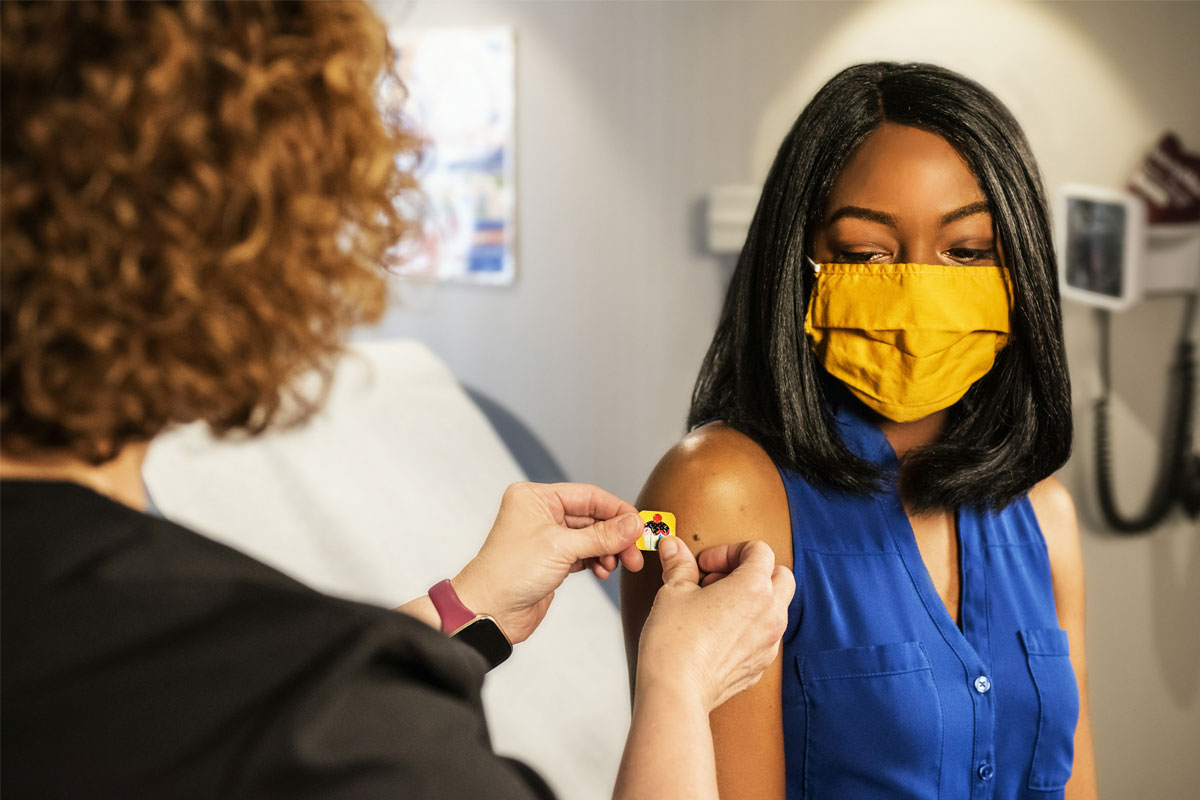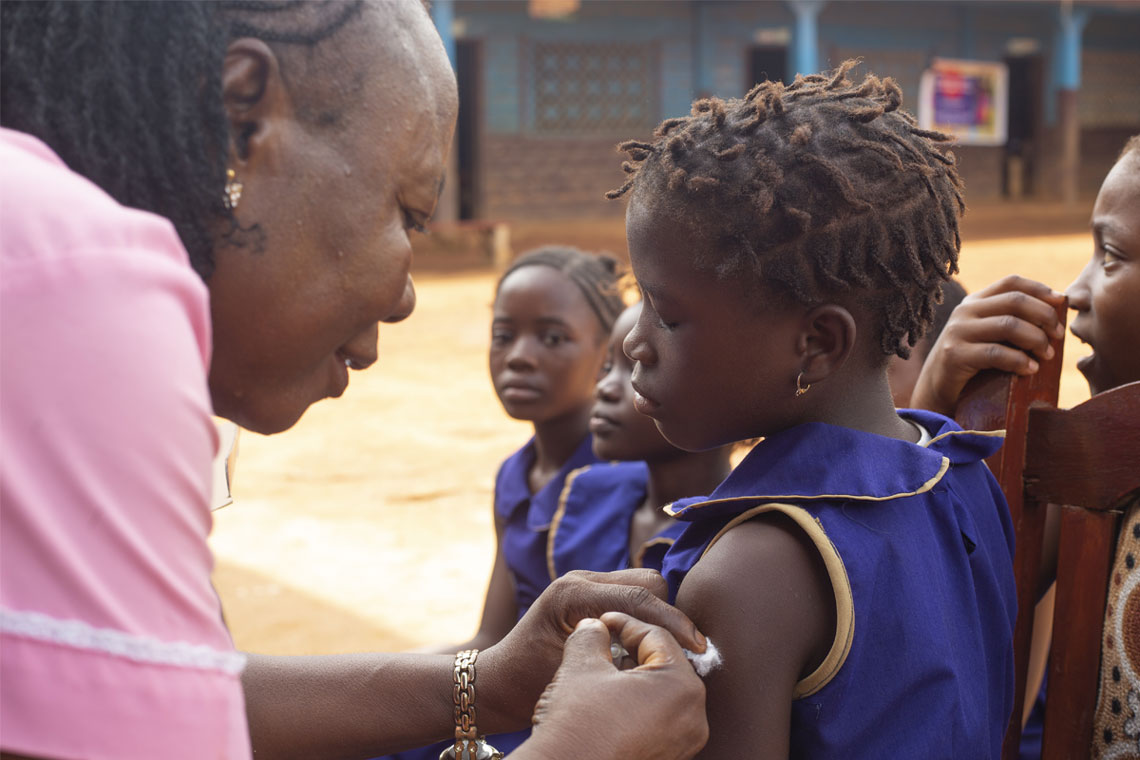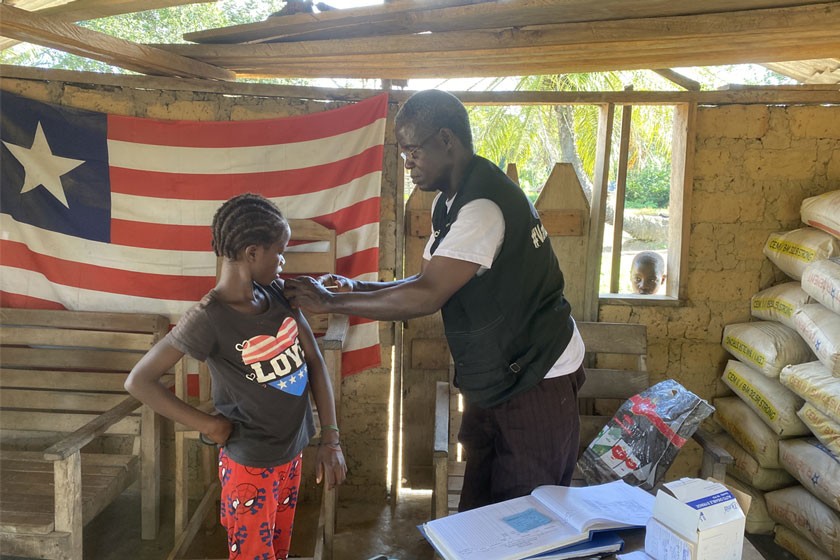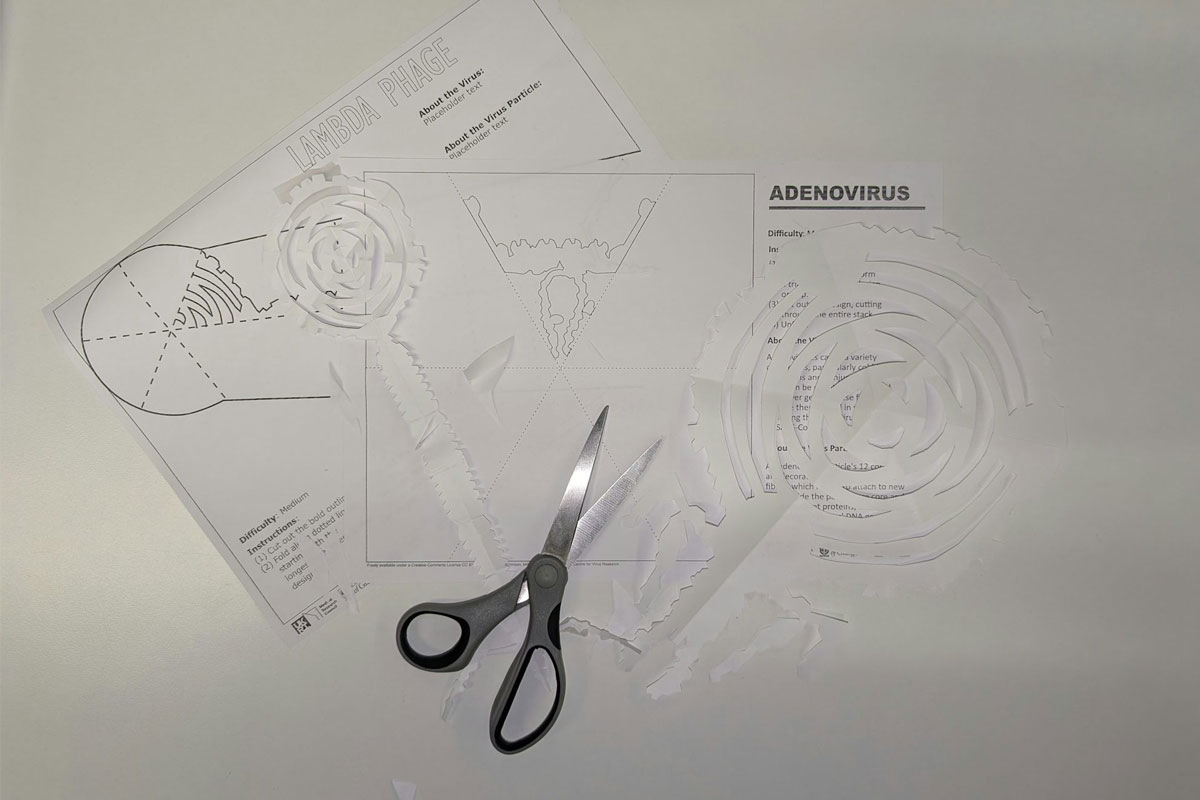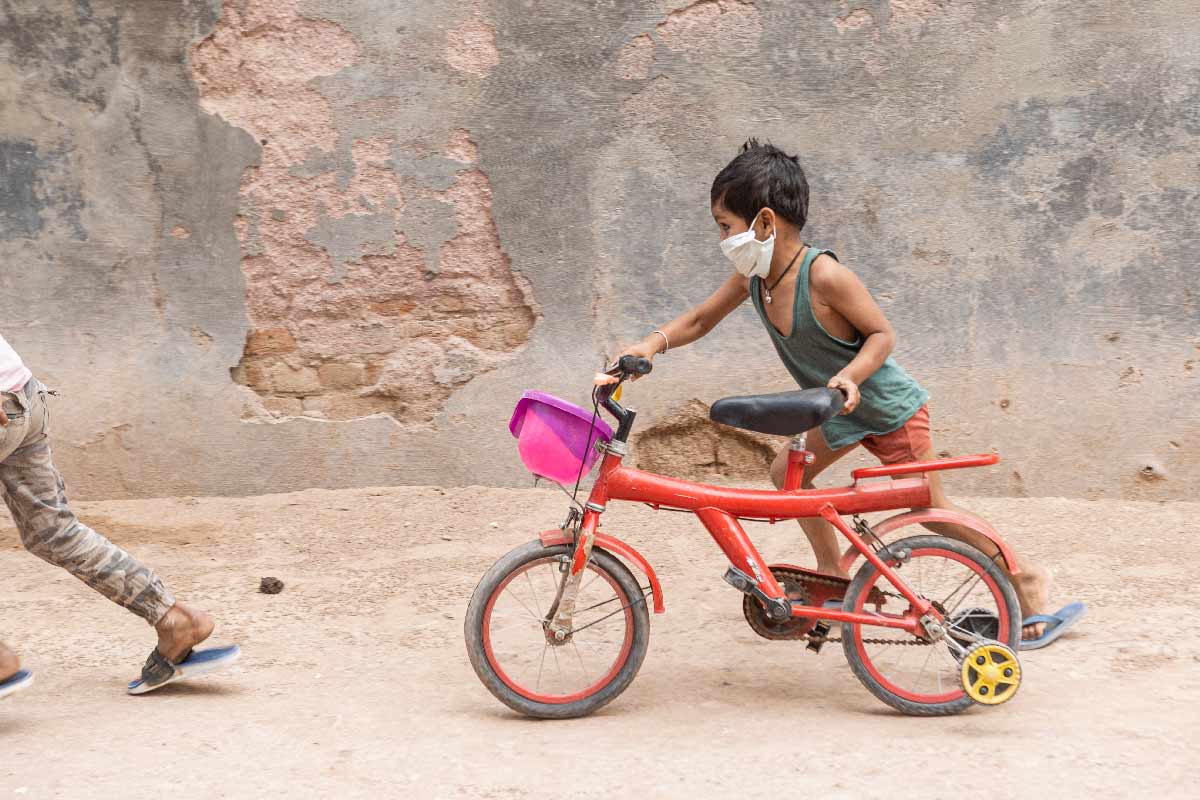In western Kenya, traditional birth attendants become vaccine champions
Between 2016 and today, childhood vaccination rates in the area covered by Kopsiro Model Health Centre on the slopes of Mt Elgon have rocketed from 30% to more than 90%. Women like Evelyn Chewuno have played a huge role in that revolution.
- 12 February 2025
- 6 min read
- by Pius Sawa
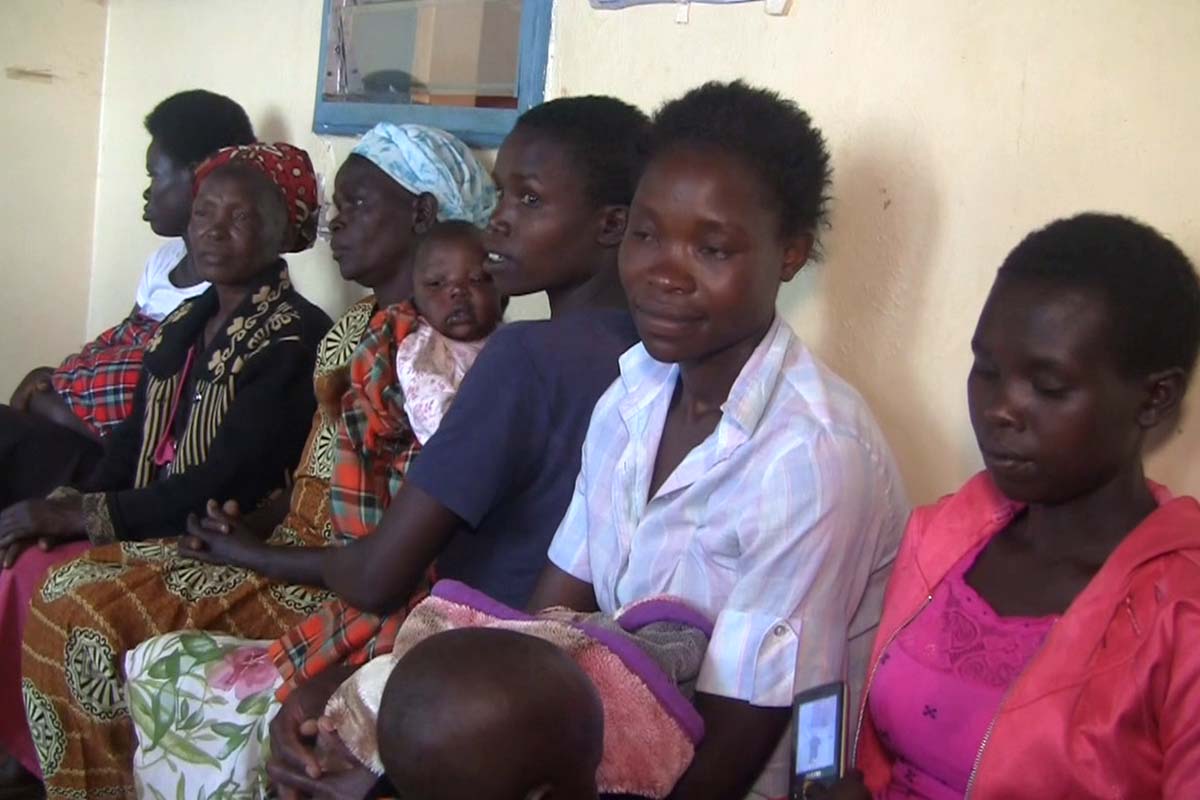
When Evelyn Chewuno, 62, from Kibura village on the slopes of western Kenya’s Mt Elgon began working as a traditional birth assistant (TBA) two decades ago, the nearest clinic was a good 60 kilometres away.
Chewuno’s skills were passed on by her grandmother, who learned her craft from the women before her rather than through any formal, scientifically-grounded medical training. But for many expectant local women, the local TBA was the best and only help in reach.
However, the babies born under her care began their lives out of touch with the health system. Most never received their initial vaccines, and childhood mortality rates, she recalls, were high.
In 2016, however, the Kopsiro Model Health Centre opened its doors, halving the travel distance for Kibura villagers. Chewuno, already a trusted voice among mothers in her community, was recruited into the ranks of the community health volunteers who campaigned for the importance of vaccination and safe delivery in the communities ringing the new health centre.

75% drop in mortality
Over the past nine years, Herbert Ogoti, who worked at the health centre for several years as the nurse in charge, has witnessed a transformation. “Many children died because they never received the initial vaccines,” he says, describing the earliest days of the clinic’s existence. “Mothers never attended antenatal clinics. Many developed complications and failed to reach the health centre in good time to save the babies.”
In an initiative spearheaded by Kopsiro Health Centre management, with support from WHO, UNICEF, Save the Children and the Kenyan government, a cadre of influential ‘champions’ for vaccination and safe delivery were trained up.
“We selected 23 TBAs and 10 community health volunteers for a five-day training as mobilisers for antenatal care and vaccination. They immediately started moving around villages talking to families about the importance of vaccinating children, and of mothers visiting the health centre once they realised they were pregnant,” Ogoti.
Ogoti claims that childhood deaths in the area reduced by 75% between 2016 and 2020. The facility had begun registering as many as 900 children each month who were brought for vaccination.
Have you read?
The TBAs’ role – a link between the villages and the health centre – has been indispensable to the transformation. Women like Chewuno are responsible for updating mothers on the days vaccines are available, following up with mothers to ensure the children don’t miss the doses they are due, and encouraging men to allow their wives to attend antenatal clinics and vaccines for the babies.
It’s considered a volunteer role, but incentives are paid. “When a TBA accompanies a mother for delivery, we give her money to cater for her transport, and also pay her 250 Kenyan shillings (US$ 2) for every mother she accompanies to deliver at the facility,” said Dr Hesborn Kambo, the current in-charge of Kopsiro Model Health Centre.
Additionally, TBAs are also paid 50 shillings (US$ 0.50) for every first antenatal care session attended by one of “their” mothers. “So if a TBA brings 100 first ANC, she gets 5,000 shillings (US$ 50), and if she accompanies, say 50 mothers for delivery, that is another 12,500 shillings (US$ 125). That is a good motivation to keep them referring more mothers to the clinic,” explained Dr Kambo. He says between October 2023 and October 2024, a total of 816 children were born at the health centre.
Families embrace immunisation
Robert Kimutai and his wife Aisha Kipkemei are among the local parents who have made sure to bring their three children in for each of their childhood vaccines.
Kimutai accompanies his wife whenever she visits the clinic. “Vaccinations have made our children healthy, because a child who is not vaccinated falls sick all the time and the body is generally weak,” said Kimutai. Kipkemei adds, “I have seen my friends who give birth at home getting complications, and I decided never to risk my life and the life of my baby. I also see children who don’t get vaccinated developing polio.” While Kenya has not seen a case of indigenous, wild-type poliovirus since 1984, outbreaks of variant poliovirus have struck low-coverage areas of the country periodically in recent years.

Catherine Nekesa, a woman in in her 70s, says she ensures that all her grandchildren are vaccinated, and that her sons’ wives deliver at the Kopsiro Health Centre.
“When young, I saw two of my uncle’s children die from measles because they were never vaccinated. They could develop rashes and high fever and after a few days they die. But mine never died because I made sure they received all the vaccines. That’s why I must accompany my daughters-in-law to the health centre, and when it is time for vaccination, I come with them to the clinic.”
Immunisation coverage spikes, child mortality is halved again
Dr Kambo says child mortality has halved again since 2020, and attributes much of that transformation to the efforts of the TBAs. He says the TBAs are given frequent mentorship by health officers at the clinic and pass on the information they receive to mothers back in the villages.
“They are helping us reduce the burden of people who still don’t accept vaccines. When we talk to mothers, the TBAs are present and they listen to what we tell mothers. They then take the same information to the mothers who are in the villages. This has seen many mothers bring their babies for vaccination,” said Dr Kambo.
Through these efforts, the Kopsiro Model Health Centre has seen the number of children accessing vaccines grow from just 30% in 2016 to an estimated 87–95%, according to the physician.
Chewuno, meanwhile, says she is happy to help save the lives of mothers and children – always her goal. Today, as well as helping educate parents, she helps administer polio vaccines during campaigns.
“I have a list of the children who passed through my hands and some of them are now grown-ups. I can’t imagine some of them would be dead if I had not helped their mothers come to the health centre for antenatal care and delivery plus vaccination,” she said.
According to Dr Kambo, today a minority of children are still born at home, but none of them remains unvaccinated, because five other clinics have been established to boost the healthcare around the region.
Though the new clinics largely lack electricity and lab access, they come to Kopsiro Health Centre for diagnostic kits and vaccines. Community health promoters and volunteers transport the life-saving doses on motorbikes to the more distance healthcare outposts. Meantime, In January alone, Dr Kambo says, 47 first-time antenatal care attendees were brought to the health centre by 17 TBAs.
“My children are now able to go to school, and none of them has developed those bad diseases which used to kill children,” Jenipher Chemutai, a mother of six, told VaccinesWork. “I had a neighbour whose children were always missing school because they were falling sick all the time. I think they did not get vaccinated.”

